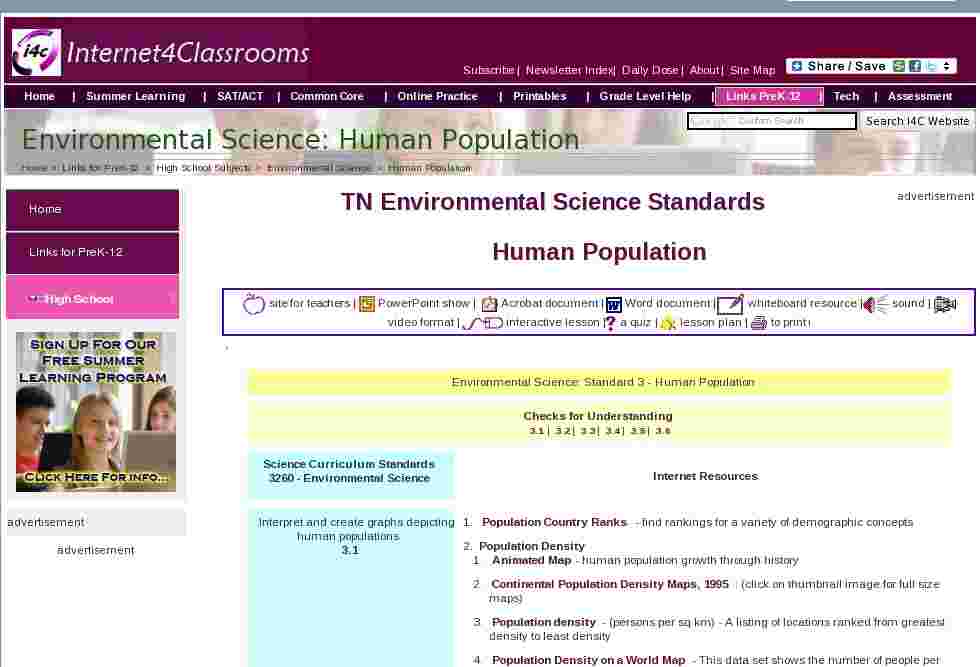TN Environmental Science Standards
Human Population
site for teachers |
PowerPoint show |
Acrobat document |
Word document |
whiteboard resource |
sound |
video format |
interactive lesson |
a quiz |
lesson plan |
to printt
Science Curriculum Standards
3260 - Environmental Science
- Population Country Ranks - find rankings for a variety of demographic concepts
- Population Density
- Animated Map - human population growth through history
- Continental Population Density Maps, 1995: (click on thumbnail image for full size maps)
- Population density - (persons per sq km) - A listing of locations ranked from greatest density to least density
- Population Density on a World Map - This data set shows the number of people per square kilometer around the world in 1994.
- Summary Demographic Data - This page allows you to obtain summary demographic data and population pyramids for one country.
- Where People Live on Planet Earth - a color-coded map produced from populations estimates made for 1994. (click the map for a larger version)
- Population Growth Rate
- Human Population: 2006 Data Sheet - a thirteen-page document
- Population growth rate - a list of countries ordered from the highest growth rate to the lowest
- Population growth rate (All Descending) - a more detailed listing of the growth rates
Population Growth Rate - a learning module from the World Bank Group
Population Growth Rate Teaching Activities (with answers) - a learning module from the World Bank Group
Migration - Why people move - lesson plan from National Geographic
Migration to and in the U.S. - lesson plan from National Geographic
- Migration Information Source - offers useful tools, vital data, and essential facts on the movement of people worldwide
- Migration News - posted by the University of California - Davis
- Thirteen Reasons Our Ancestors Migrated - Reasons for migration.
- Why People Migrate - Effect of Migration on Population Growth
- European Immigration - Description of reasons for emigration and changes they made in America.
- Natives and Immigrants - Welcome to the Natives and Immigrants view of the Gold Rush. Follow the pathway of one of these cultures: As you move through the exhibitions, look for the Native and Immigrant labels at the top of the page to learn more about how these cultures experienced the Gold Rush

Search Internet4Classrooms
 Custom Search
Custom Search
- Site Map |
- About Us |
- Teacher Training |
- Make Internet4Classrooms.com your home page. |
- Copyright © 2000-2024 Internet4Classrooms, LLC All rights reserved.
Use of this Web site constitutes acceptance of our Terms of Service and Privacy Policy.
1764988070556797 US 7 desktop not tablet not iPad device-width